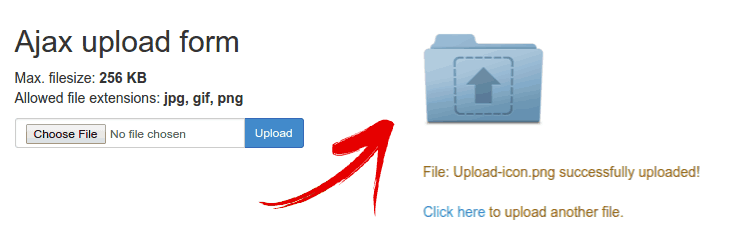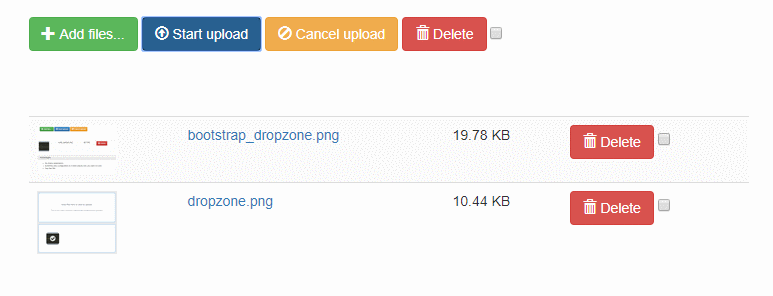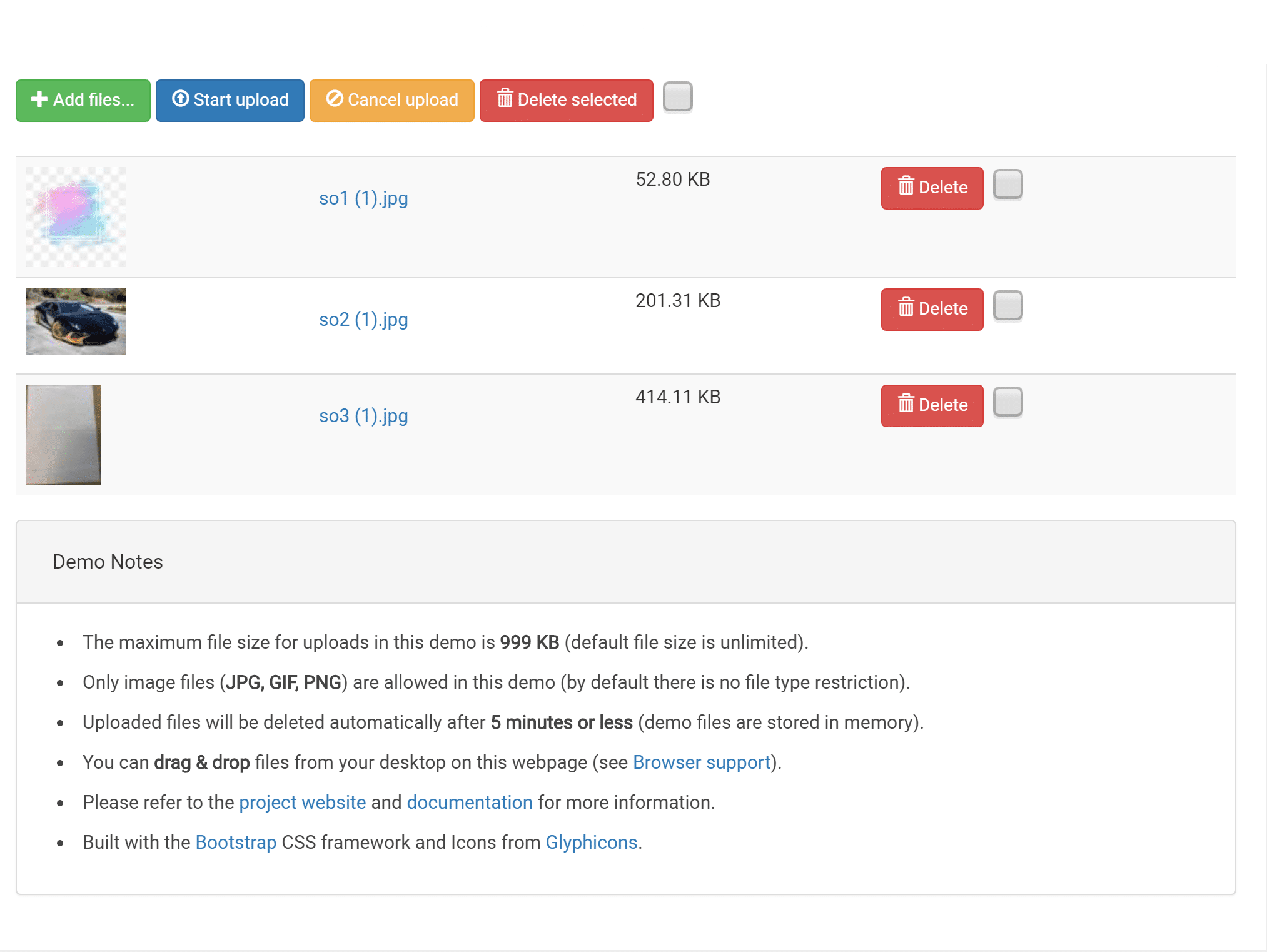

- #JQUERY SINGLE FILE UPLOAD EXAMPLE HOW TO#
- #JQUERY SINGLE FILE UPLOAD EXAMPLE INSTALL#
- #JQUERY SINGLE FILE UPLOAD EXAMPLE LICENSE#
- #JQUERY SINGLE FILE UPLOAD EXAMPLE WINDOWS#
This.done = $("" + s.doneStr + "").appendTo(this.statusbar).hide() This.cancel = $("" + s.cancelStr + "").appendTo(this.statusbar).hide() This.abort = $("" + s.abortStr + "").appendTo(this.statusbar).hide() This.progressbar = $("").appendTo(this.progressDiv) This.progressDiv = $("").appendTo(this.statusbar).hide() This.preview = $("").width(s.previewWidth).height(s.previewHeight).appendTo(this.statusbar).hide() $( ' #btnUploadFile').Using the below configuration, you can design your own progress bar. The file upload control will browse the file which will be uploaded on button click. Let's add the HTML controls, i.e., for this case, add a file upload control and a button. aspx" page and select " Set As Start Page" option from the context menu. aspx" page as start page for the project. Right-click on the project -> Add -> New Itemįrom the " Add New Item" window, select " Web Form" and give a name for it.

You can add an empty folder by right-clicking on the project and select Add -> New Folder. The uploaded files are saved to " UploadedFiles" folder. The UploadFile() method/action is only accessible by POST request as it is assigned with attribute. Save the uploaded file to "UploadedFiles" folder Validate the uploaded image(optional) // Get the complete file path var fileSavePath = Path.Combine(( " ~/UploadedFiles"), httpPostedFile.FileName) Get the uploaded image from the Files collection var httpPostedFile = Every ASP.NET Web API controller files are inherited from this " ApiController". Now go to " FileUploadController.cs" class file and inherit it from " ApiController". By convention, all the controller class file names are suffix with "controller". Right click on the project in Visual Studio and select Add -> Class. It will contain an action, i.e., method which will handle the file upload. Let's add a simple class which will act as the controller.
#JQUERY SINGLE FILE UPLOAD EXAMPLE INSTALL#
It will install the latest Web API package to the project.
#JQUERY SINGLE FILE UPLOAD EXAMPLE WINDOWS#
You can install the Web API nuget package from the Package Manager Console ( View -> Other Windows -> Package Manager Console) by using the following command:
#JQUERY SINGLE FILE UPLOAD EXAMPLE LICENSE#
After the package is downloaded, if it will ask for license acceptance, click " I Accept" button. Note that the version of the Web API may vary as when the article was written, the latest available version was 2.2. Select " Microsoft ASP.NET Web API 2.2" and click the " Install" button. The results will be similar to the below screenshot: It will display the " Manage Nuget Packages" window and from the left side, select " Online" tab and search for " ". To do so, right-click on the project in Visual Studio and select " Manage Nuget Packages".


It will create an empty web application which will contain nfig and Web.config files.
#JQUERY SINGLE FILE UPLOAD EXAMPLE HOW TO#
In the next walk-through, I will show how to add a Web API controller to an empty ASP.NET web application and how the file will be posted through jQuery AJAX to the controller's action. The idea here is to add the uploaded file's content to the FormData's collection by jQuery and in the action/method get the posted file's content from the Files' collection by a key. This article provides an easy way to upload an image file using jQuery AJAX in ASP.NET Web API.


 0 kommentar(er)
0 kommentar(er)
